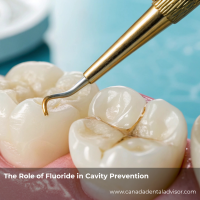A Story of a Smile Transformation
Meet Jenna — a 35-year-old teacher who always felt self-conscious about her smile. Coffee-stained teeth and inconsistent dental habits had taken their toll. Tired of feeling embarrassed every time she laughed, Jenna visited her dentist hoping for a quick fix. But instead of an off-the-shelf solution, her dentist created a personalized care plan — combining dietary changes, targeted cleanings, and home-care routines. One surprising addition? A list of foods to help whiten her teeth naturally.
A few months later, Jenna’s smile wasn’t just brighter — it was healthier, and her confidence had returned.
The Science Behind Food-Based Whitening
Foods that naturally whiten your teeth work in several ways:
-
Abrasive texture: Helps scrub away surface stains.
-
Enzymatic action: Breaks down plaque and residue.
-
pH balancing: Reduces harmful bacteria in the mouth.
-
Increased saliva production: Rinses away debris and neutralizes acids.
Now, let’s dive into the tastiest part.
Top Foods That Naturally Whiten Your Teeth
1. Strawberries
It may seem counterintuitive — they’re bright red! — but strawberries are packed with malic acid, an enzyme that helps dissolve surface stains.
Tip: Mash a strawberry and mix it with baking soda for a quick DIY whitening paste (use occasionally).
2. Apples
Crunchy and fibrous, apples act like a natural toothbrush. Their high water content also stimulates saliva production, which helps cleanse the mouth.
3. Carrots and Celery
These raw veggies work double-time: their crunch scrapes plaque away, and their water content boosts saliva, your body’s natural mouthwash.
4. Pineapple
Pineapple contains bromelain, a natural enzyme that helps break down protein particles stuck on your teeth and reduces surface stains.
5. Cheese
Hard cheeses like cheddar are rich in calcium and stimulate saliva production. They also help protect enamel, which keeps your teeth looking whiter.
6. Broccoli
Raw broccoli florets can gently scrub teeth surfaces, and the iron in broccoli forms a protective layer that can prevent enamel erosion.
7. Oranges and Pineapple
Though acidic, these fruits increase saliva flow. Just be sure to rinse your mouth with water afterward to avoid acid wear.
8. Baking Soda (used sparingly)
It’s not exactly a food, but adding a pinch of baking soda to your brushing routine a couple of times a week can safely buff away stains.
Why an Individualized Care Plan Matters
It’s tempting to think that eating a few apples or adding strawberries to your smoothie is enough. But every mouth is different. That’s where a personalized dental care plan shines.
1. Tailored Recommendations
A good dentist doesn’t offer cookie-cutter solutions. Your enamel thickness, stain type, and lifestyle habits all play a role in which natural remedies work best for you.
2. Improved Patient Compliance
Patients like Jenna who receive plans based on their personal goals and habits are more likely to stick with them. Knowing why something is recommended builds motivation.
3. Long-Term Oral Health Benefits
Customized care ensures a comprehensive strategy — not just for whitening, but for preventing cavities, gum disease, and enamel erosion.
Putting It All Together: A Brighter Smile That Lasts
Jenna’s story isn’t unique — it’s a testament to what’s possible when you combine the right foods with the right dental guidance. Here’s how to start:
Personalized Whitening Strategy Checklist:
-
Eat more crunchy, raw fruits and veggies
-
Incorporate natural stain-fighters like strawberries and pineapple
-
Schedule regular cleanings and assessments
-
Work with your dentist on a care plan tailored to your habits
-
Avoid overusing acidic or abrasive home remedies
FAQs
1. Can I whiten my teeth just by eating certain foods?
While foods like strawberries, apples, and celery can help reduce surface stains, they work best as part of a broader care plan that includes good brushing habits and regular dental visits.
2. Are acidic fruits safe for whitening?
They can help by increasing saliva flow, but overexposure to acid can wear enamel. Always rinse with water afterward and limit frequency.
3. How long does it take to see results from natural whitening?
Most people notice subtle results within a few weeks, but it depends on diet, lifestyle, and existing stains.
4. Is baking soda safe for daily use?
No. Use it only 1–2 times per week to avoid damaging your enamel.
5. What if I have sensitive teeth?
Talk to your dentist before using whitening foods or products. They may adjust your care plan to avoid irritation.
6. Can children use natural whitening methods?
Yes — but under adult supervision and without harsh abrasives like baking soda.
7. Do I still need whitening treatments from the dentist?
In-office treatments are faster and more dramatic, but natural methods are a great complement or maintenance solution.











Leave a Reply